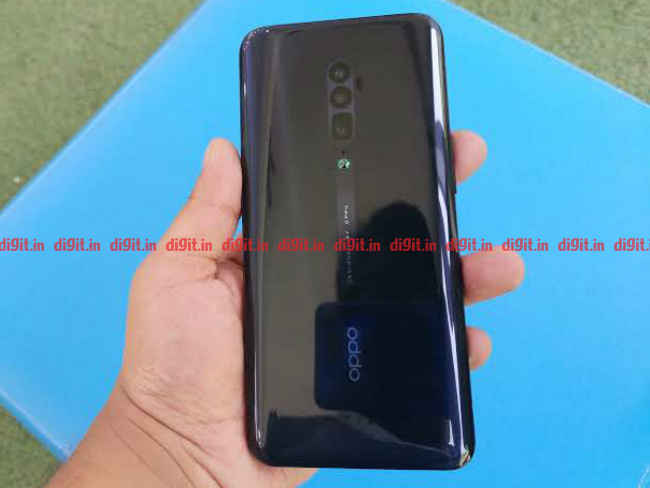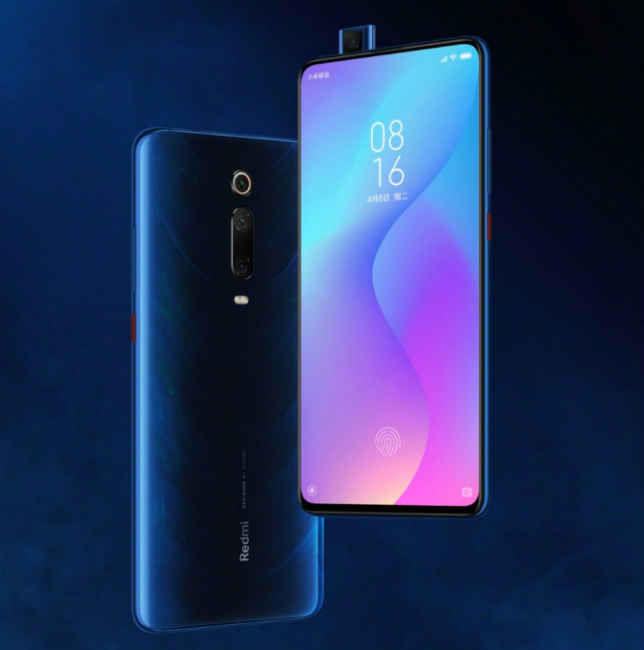After launching it in China and Europe earlier this year, Oppo has launched the Reno and Reno 10x Zoom smartphones with shark fin-type pop-up selfie mechanism in India. While the standard Oppo Reno is powered by the Snapdragon 710 chipset, the Oppo Reno 10x zoom is a flagship device with a Qualcomm Snapdragon 855 processor. The Oppo Reno is priced at Rs 32,990 and will be available on Amazon. Meanwhile, Oppo Reno 10X Zoom will be available at a starting price of Rs 39,990. The Oppo Reno series will be available with a few pre-book offers. Customers who have HDFC credit/debit card can avail an instant discount of 10 percent on EMI transactions and consumer loans. Additionally, consumers can get a 10 percent cashback on exchange and assured buyback for a year, powered by Instacash.
“We’ve been steadfast in using technological innovations to solve customer problems in ingenious ways. True to Oppo's creative philosophy of developing artistic designs for its smartphones, the brand continuously strives to create new designs using the latest trends and its cutting-edge expertise. Reno is deeply rooted in creativity, spontaneity and youthful spirit and is undoubtedly set to satisfy high expectations in design, photography and performance through unique innovations. We are hopeful that Reno will not only serve as the catalyst for the future of Oppo’s smartphone development but will also fuel creativity, take our legacy of innovation forward and set a new benchmark in the premium segment,” Charles Wong, CEO, Oppo India, said in a statement.

Oppo Reno 10x Zoom specifications:
The Oppo Reno 10x zoom sports a Full HD+ 6.65-inch AMOLED display with a resolution of 2340 x 1080 pixels. The phone is claimed to deliver a 93.1 percent screen-to-body ratio, thanks to the shark-fin type front rising camera. The display is protected by a Gorilla Glass 6, and the phone sports a sixth-generation in-screen fingerprint sensor. On the back, the Oppo Reno 10x zoom has a glass finish. Under the hood, the phone comes with the flagship Qualcomm Snapdragon 855 platform along with up to 8GB of RAM and 256GB of internal storage, which can be expanded via a microSD card. The phone houses a 4,065mAh battery with VOOC 3.0 fast charging support.
For an optimised gaming experienced, Oppo has included Game Boost 2.0 acceleration engine and Dolby Atmos support. The HyperBoost 2.0 includes GameBoost, SystemBoost, and AppBoost that brings performance improvements in terms of game experience, system speed and APP opening speed, respectively. The phone features a copper tube liquid cooling tech for heat dissipation. Oppo says that the tech includes a combination of Thermal Gel, a Graphite Sheet, Copper Pipe Liquid Cooling, and a Tri-cooling Control to manage the temperature of the smartphone. It runs Android 9 Pie-based ColorOS 6 and has an AI-powered Breeno virtual assistant.

The Oppo Reno 10x Zoom features a triple camera setup on the back. It has three sensors including a 48MP Sony IMX586 sensor with a lens having f/1.7 aperture and OIS, an 8MP secondary sensor with a lens having f/2.2 aperture, and a periscope telescopic lens with a 13MP sensor. The triple camera setup is coupled with dual-LED flash and laser autofocus tech. For selfies, the phone sports a 16MP sensor with a lens having f/2.0 aperture, and an LED flash. All this is housed in a shark-fin type camera.
Oppo Reno Specifications:
The standard Oppo Reno sports a smaller 6.4-inch full HD+ display with a 19.5:9 aspect ratio. The company is calling the display as ‘Panoramic Screen.’ Just like the flagship, the phone comes with an in-display fingerprint reader and the panel is protected by Gorilla Glass 6. Instead of the Qualcomm’s flagship Snapdragon 855 processor, the Oppo Reno is powered by the Qualcomm Snapdragon 710 SoC, along with 8GB of RAM and 128GB of storage. The Oppo Reno features a dual camera system with 48MP and a 5MP sensors on the back. On the front, it features 16MP pop-up selfie camera with an LED flash. The handset includes a 3,765mAh battery with VOOC 3.0 fast charging.

Oppo Reno and Reno 10x Zoom prices:
The Oppo Reno 10x Zoom will be available for pre-booking from May 28 and sale will start from June 7, across all online and offline stores. The 8GB RAM + 256GB storage variant is priced at Rs 49,990. The 6GB RAM and 128GB storage variant will cost users Rs 39,990. Customers will have an option to choose from two colours: Ocean Green and Jet Black. The Oppo Reno is priced at Rs 32,990 for the 8GB RAM and 128GB storage variant.

from Latest Technology News http://bit.ly/2VX4ZTc





